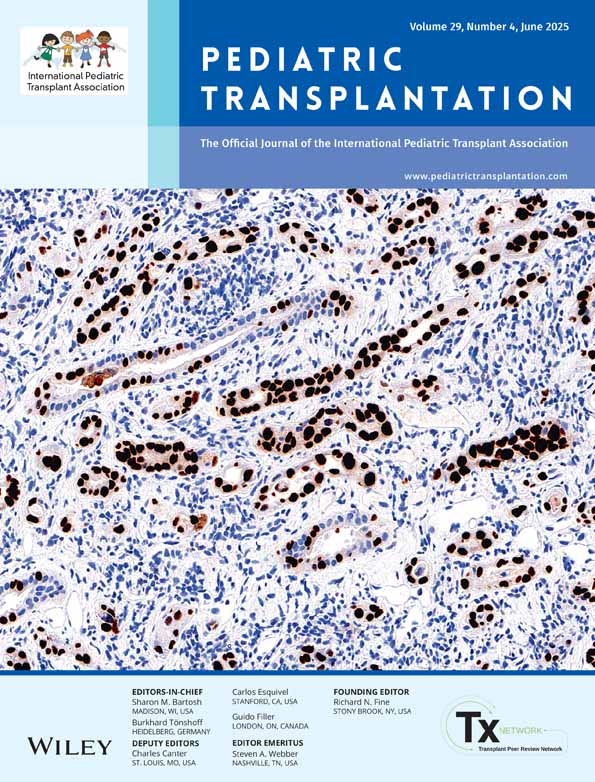Bortezomib as a Potential Treatment for Recurrent Autoimmune Hepatitis Following Pediatric Liver Transplantation
Funding: The authors received no specific funding for this work.
ABSTRACT
Background
Autoimmune hepatitis (AIH) is a chronic inflammatory liver disease that can progress to liver cirrhosis and end-stage liver disease, often necessitating liver transplantation (LT). Pediatric LT has significantly improved survival outcomes, but complications such as acute steroid-resistant rejection and AIH recurrence pose serious challenges.
Case Presentation
We report the first documented pediatric liver transplantation case in Uzbekistan, performed on a 14-year-old boy with liver cirrhosis secondary to AIH. Despite successful surgery, the patient developed acute steroid-resistant graft rejection and was unresponsive to pulse methylprednisolone therapy and anti-thymocyte globulin (ATG), which also induced adverse effects, including polyneuropathy and hypertension. Further evaluation revealed reactivation of AIH, confirmed by elevated ANA and ANCA titers. Conventional therapies failed to control the disease, prompting the use of bortezomib, a proteasome inhibitor. After the initial dose of bortezomib, significant improvement in bilirubin levels and liver synthetic function was observed. A second dose, administered 7 days later, resulted in the normalization of liver function markers and serological antibodies by postoperative Day 30. The patient was discharged in stable condition under a triple immunosuppressive regimen. To the best of our knowledge, we report the first documented case of using bortezomib for the treatment of recurrent autoimmune hepatitis in a pediatric patient following liver transplantation.
Conclusion
This case emphasizes the effective use of bortezomib as a rescue therapy for steroid-resistant rejection and the recurrence of autoimmune hepatitis following pediatric liver transplantation. It highlights the significance of alternative therapeutic approaches in addressing complex post-transplant immune complications. Furthermore, this case prompts crucial considerations for future research, such as the monitoring of autoimmune disease reactivation and the potential role of drugs like bortezomib in managing immune-related complications after liver transplantation.
Conflicts of Interest
The authors declare no conflicts of interest.
Open Research
Data Availability Statement
The data that support the findings of this study are available from the corresponding author upon reasonable request.




